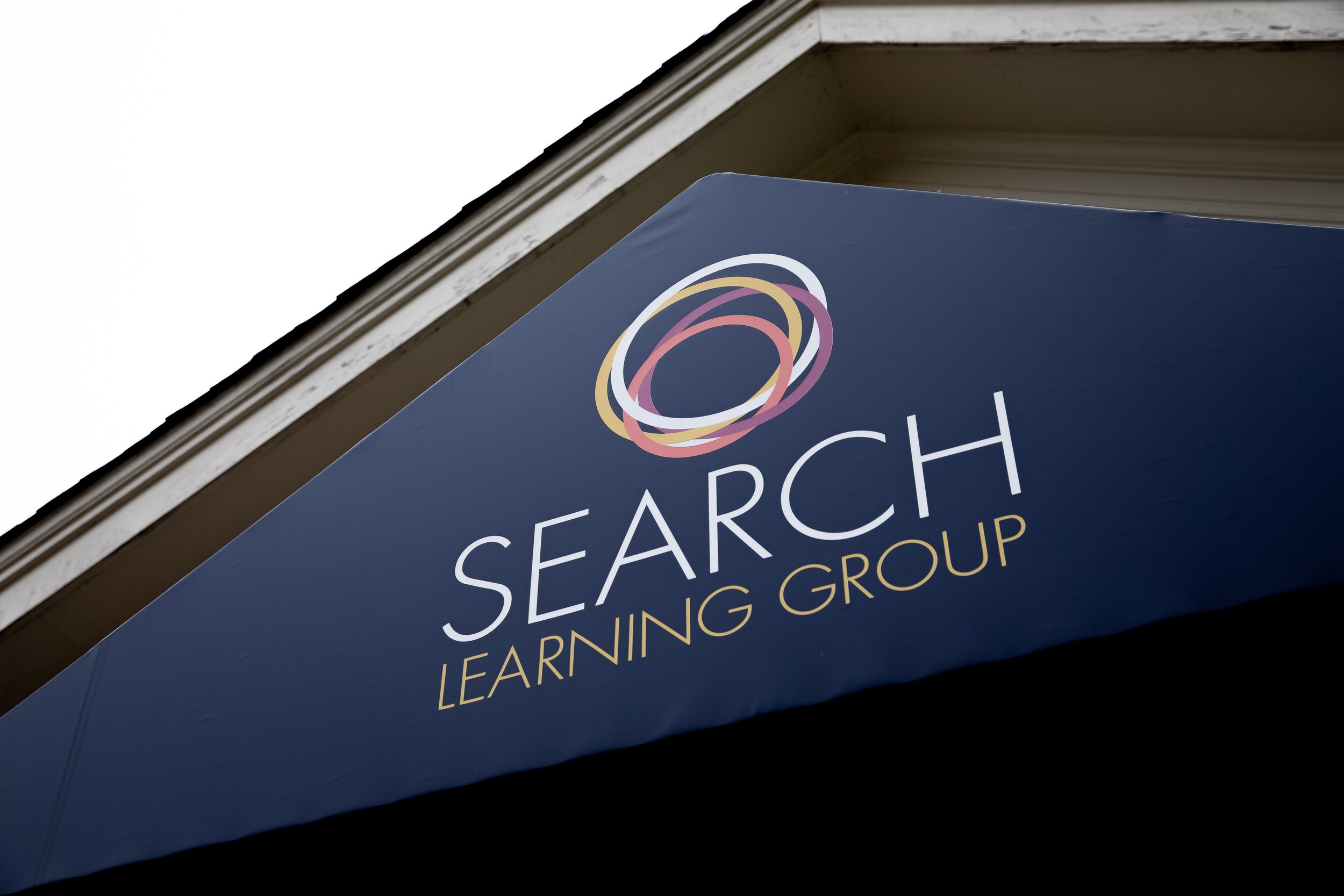
Resources
SEARCH encourages families to equip themselves with knowledge about autism, ABA, and effective treatment programs. Families can most effectively advocate for their child when they understand the educational needs of a child with autism, as well as the components of quality-educational programs. The resources listed below offer a wide range of information that can be helpful to those new to the diagnosis, and those who already have a basic understanding and are looking to expand their knowledge base.
For more information about autism and ABA, SEARCH recommends visiting the following websites:
Association for Science in Autism Treatment
The New Jersey Association for Behavior Analysis
Behavior Analyst Certification Board
Journal of Applied Behavior Analysis (JABA)
Cambridge Center for Behavioral Studies
Applied Behavior Analysis International
Black Applied Behavioral Analysts

For Parents and Caregivers
SEARCH is committed to providing learners with comprehensive, behavior-analytic programming designed to produce optimal results. Our full-time programs offer highly-specialized and individualized programming, which targets the core deficits of autism, specifically language, and social and peer communication skills. SEARCH employs the principles of Applied Behavior Analysis (ABA) by breaking down complex skills into smaller, more manageable components and teaching each systematically. As learners acquire these foundational skills, more advanced targets are systematically introduced using a scaffolding approach, which sets up all of our learners for success.
Facts About Applied Behavior Analysis (ABA)
When a family is faced with an autism spectrum disorder (ASD) diagnosis, it is imperative that they receive accurate information about effective treatment as many therapies may be presented. There are decades of peer-reviewed research documenting the efficacy of ABA as a treatment for ASD. Applied behavior analysis, or ABA, is simply the application of behavioral principles to increase or decrease targeted behaviors. In other words, ABA allows individuals to make meaningful and lasting changes in their lives by employing intervention based on an understanding of how behavior works. ABA has been documented to be effective in teaching language, communication, social interaction, play, leisure, academic, and self-help skills. Additionally, ABA can effectively decrease interfering behaviors, which can impact a child’s availability for learning.
ABA is individualized and tailored to the specific needs of each learner. All intervention is data-driven, and clinical decisions are made based on careful and ongoing analysis of each learner’s progress. Clear goals and objectives are selected by identifying strengths and weaknesses and then designing teaching procedures based on the individual needs of each learner. Behavior-analytic instruction utilizes repetition and reinforcement to allow for meaningful learning to occur. Behavior analysts use dozens of evidence-based instructional strategies, including discrete trial instruction, incidental teaching, audio and video modeling, schedule following, scripting and script fading, activity schedules, and small group instruction.
Individuals with ASD may present with stereotyped motor movements (e.g., rocking, facial posturing, etc.), stereotyped use of objects (e.g., lining up toys, spinning objects, etc.), or stereotyped speech (e.g., echolalia, scripting, unusual tone or pitch, etc.).
Common Signs of Autism
The hallmark features of autism spectrum disorder (ASD) are impaired social communication skills and social interactions. As early as infancy, a baby with ASD may be unresponsive to people or focus intently on one item, at the exclusion of others, for long periods of time. A child with ASD may appear to develop normally and then withdraw and become indifferent to social engagement.
Children with ASD may fail to respond to their names and avoid eye contact with others. Learners with ASD often have difficulty interpreting what others are thinking or feeling because of difficulties understanding social cues, such as tone of voice or facial expressions. Children with ASD may lack empathy, making it challenging to form relationships with others. Children with ASD will display deficits in social skill development, which may manifest as a lack of imaginative play, challenges with making friends, or a lack of interest in peers.
Many children with autism spectrum disorders will engage in repetitive movements or patterns of behavior. Individuals with ASD may present with stereotyped motor movements (e.g., rocking, facial posturing), stereotyped use of objects (e.g., lining up toys, spinning objects), or stereotyped speech (e.g., echolalia, scripting, unusual tone or pitch). Children with ASD may insist on sameness and be inflexible to changes in routines. These impairments may manifest as difficulty with transitions, rigidity, and distress at small changes. Additionally, individuals with ASD may demonstrate highly-restricted and fixated interests that are atypical in focus or intensity.
https://www.ninds.nih.gov/autism-spectrum-disorder-fact-sheet
How Autism is Diagnosed
Autism spectrum disorder (ASD) varies widely in severity and symptoms and may go unrecognized, especially in mildly-affected children, or until social demands exceed a child’s capacity. There is no medical test for autism; rather, physicians look at a child’s behavior and development to make a diagnosis. Developmental screenings are the first step in identification. These screenings typically occur during regular well-visits at a pediatrician and allow the doctor to identify any possible delays in learning, language, or social development. Additionally, all children should be screened for ASD during well-visits at 18 and 24 months if a doctor sees any signs of atypical development, a comprehensive diagnostic evaluation should occur.
The comprehensive evaluation is completed by a developmental pediatrician, a pediatric neurologist, or a child psychologist or psychiatrist. This thorough review looks at a child’s behavior and development via interviews with parents as well as hands-on interaction with the child. Should a child meet the diagnostic criteria, they will be diagnosed with autism spectrum disorder.
https://www.cdc.gov/ncbddd/autism/hcp-dsm.html
https://www.ncbi.nlm.nih.gov/pmc/articles/PMC6722033/
https://asatonline.org/wp-content/uploads/asatdocuments/NewParentPacket.pdf
Facts About Autism
Autism spectrum disorder (ASD) is a complex neuro-developmental disorder characterized by social impairments, communication difficulties, and restricted, repetitive, and stereotyped patterns of behavior. Previously diagnosed as four different disorders (autistic disorder, Asperger’s syndrome, childhood disintegrative disorder, and pervasive developmental disorder not otherwise specified [PDD-NOS]), the current Diagnostic and Statistical Manual of Mental Disorders (DSM-5) has revised the diagnosis to help create a more accurate and scientific way of diagnosing individuals with autism-related disorders. Under the DSM-5 criteria, symptoms must be present from early childhood, even if they are not recognized until later.
Although ASD varies significantly in character and severity, it occurs in all ethnic and socioeconomic groups and affects every age group. ASD is almost five times more common among boys (1 in 42) than among girls (1 in 189) and afflicts about 1 in every 68 children, according to estimates from CDC's Autism and Developmental Disabilities Monitoring (ADDM) Network.
https://www.cdc.gov/ncbddd/autism/hcp-dsm.html
https://www.ncbi.nlm.nih.gov/pmc/articles/PMC6722033/
https://asatonline.org/wp-content/uploads/asatdocuments/NewParentPacket.pdf
Autism Indicators
Very early indicators that require evaluation by an expert include:
No babbling or pointing by age 1
No single words by 16 months or two-word phrases by age 2
No response to their name
Loss of language or social skills
Poor eye contact
Excessive lining up of toys or objects
No smiling or social responsiveness
Later indicators include:
Challenges with making friends
Challenges in initiating or sustaining a conversation with others
Absence or impairment of imaginative and social play
Stereotyped, repetitive, or unusual use of language
Restricted patterns of interest that are abnormal in intensity or focus
Preoccupation with certain objects or subjects
Early identification is critical, as it leads the way to beginning intensive behavioral intervention of applied behavior analysis. The sooner intervention can start for a child, the better the long-term outcome.

For Professionals
New Jersey has the highest incidence of autism in the country. As these numbers continue to climb, doctors play a crucial role in early identification and treatment. With support and guidance from physicians, parents, and caregivers of newly-diagnosed children have an opportunity to begin receiving quality and intensive services at an early age.
When a parent/caregiver comes face to face with an autism diagnosis, doctors can direct families to quality ABA providers so children can begin receiving services as early as possible. Applied behavior analysis (ABA) has decades of scientific research supporting its efficacy as the safest and most effective treatment for autism.
SEARCH is committed to helping families navigate the essential steps involved in planning and implementing effective services for their child. This multifaceted process often requires the involvement of a variety of professionals who can support families throughout different phases of program development. SEARCH guides families and relies on the expertise of those in related fields to provide support and guidance in various areas, including insurance support, program evaluation, obtaining funding for services, and securing future school placements for longer-term services should they be necessary. SEARCH and its network of professionals work closely with families throughout this process-driven journey to meaningful and lasting changes.

